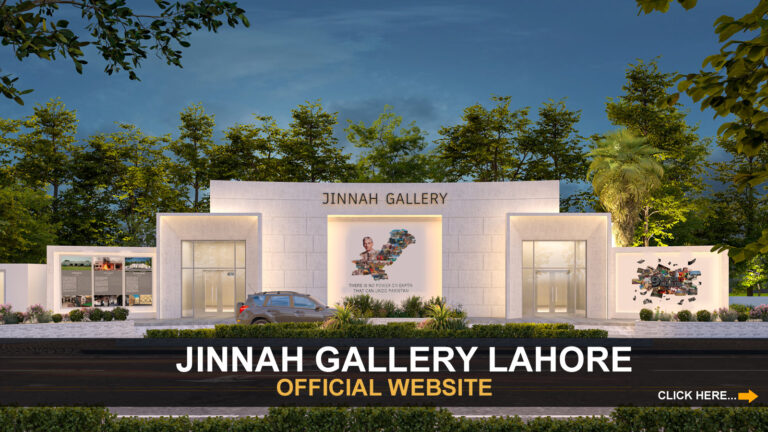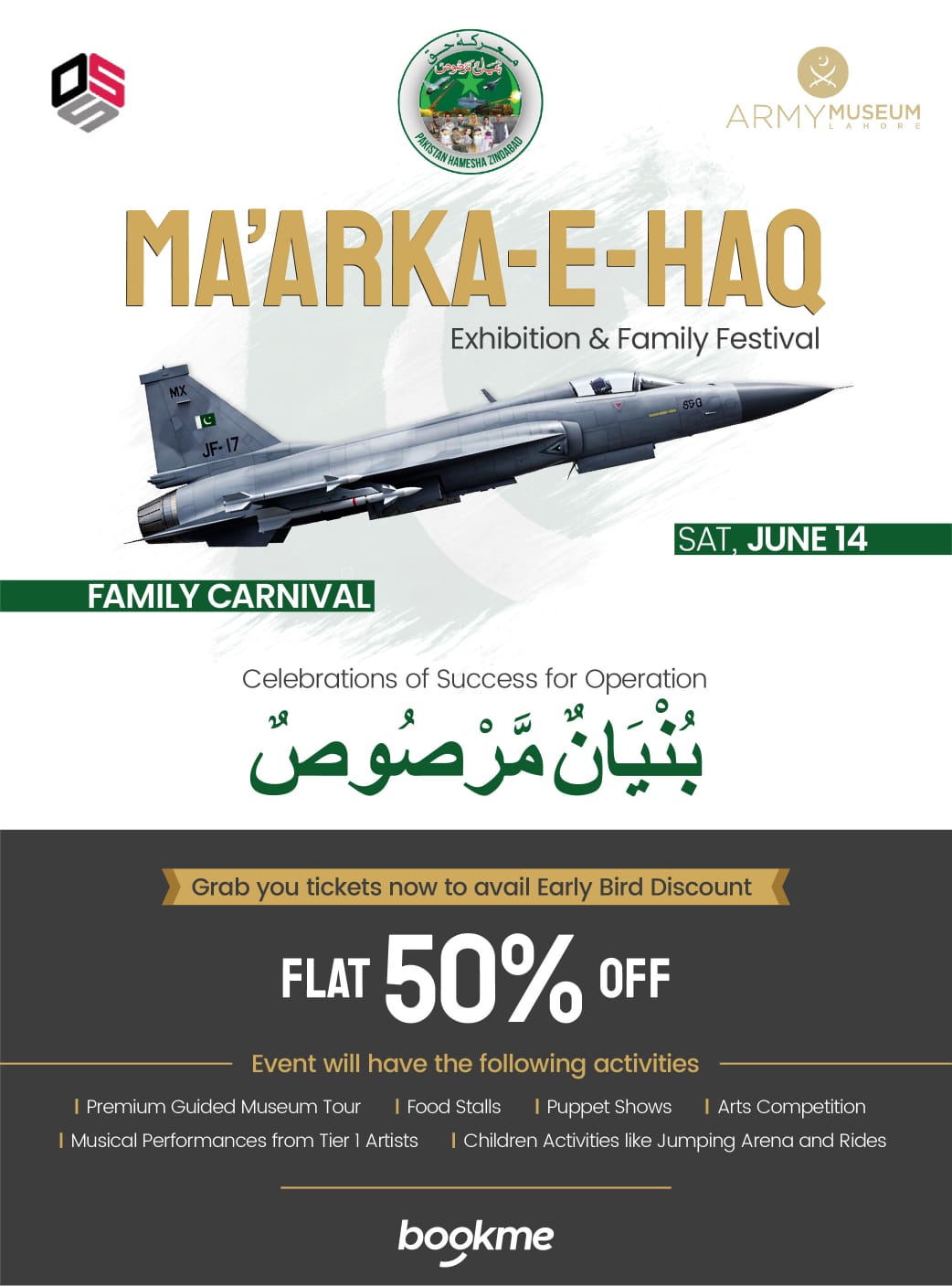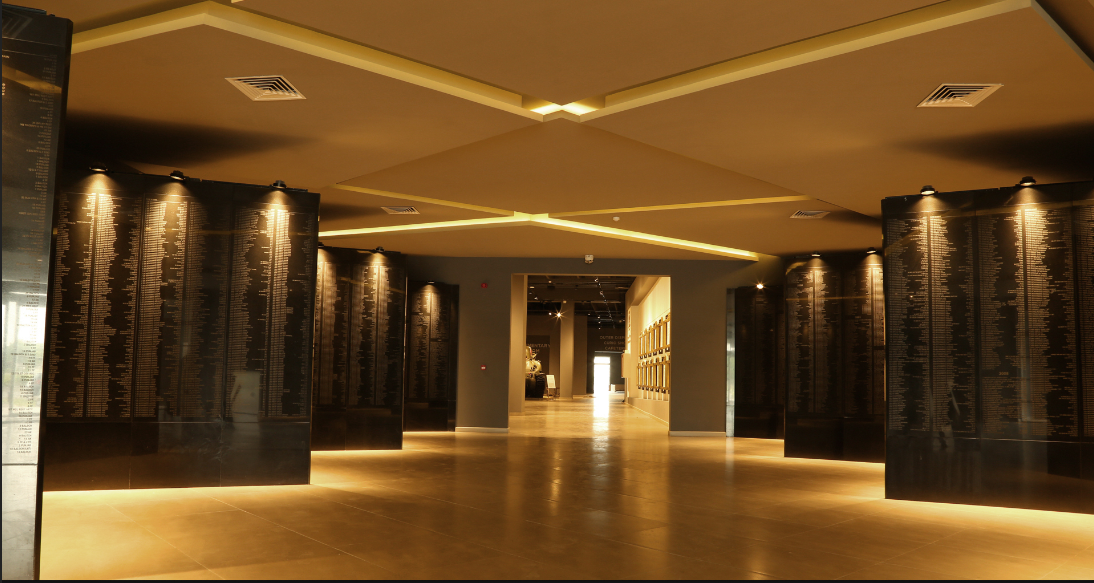
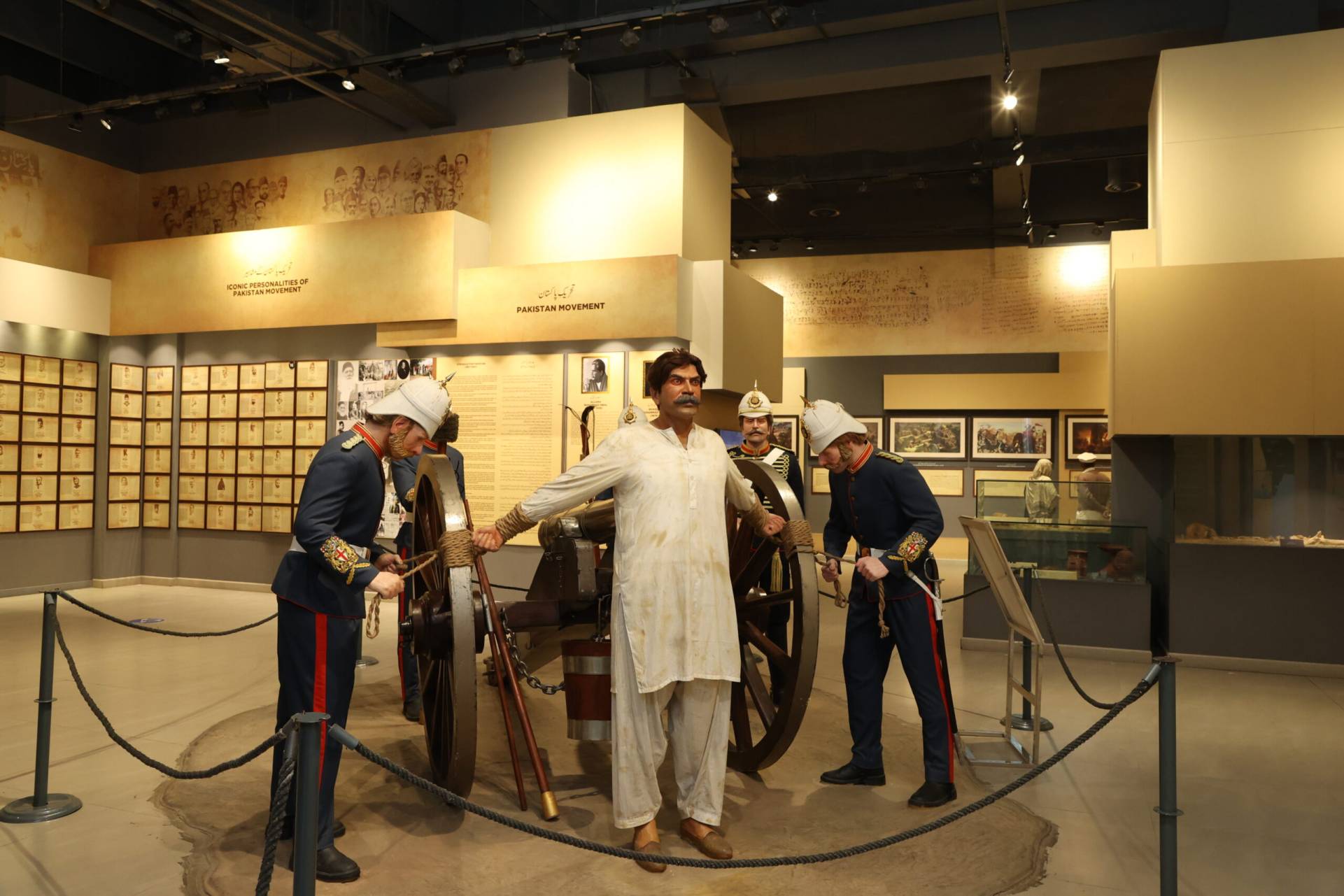
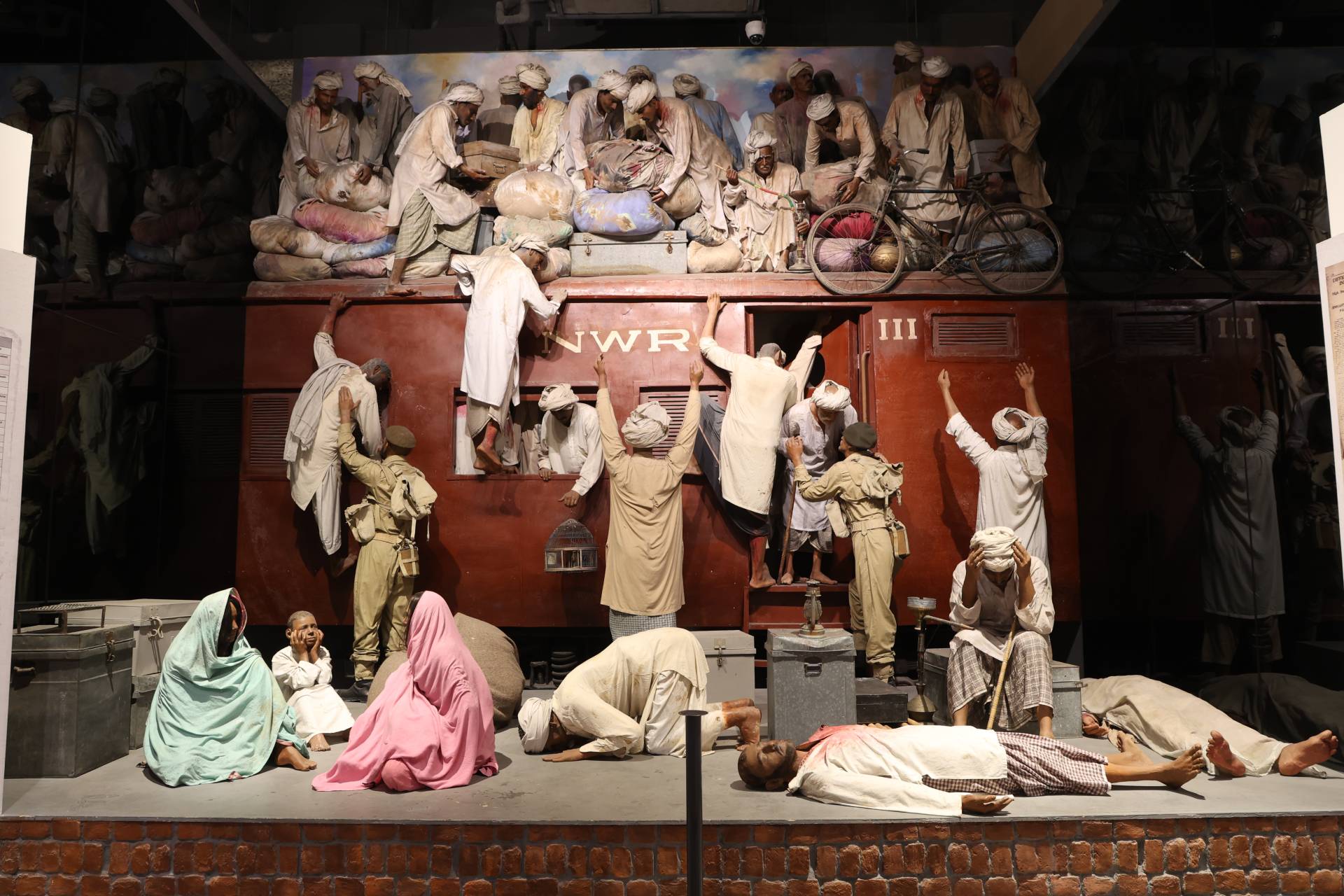
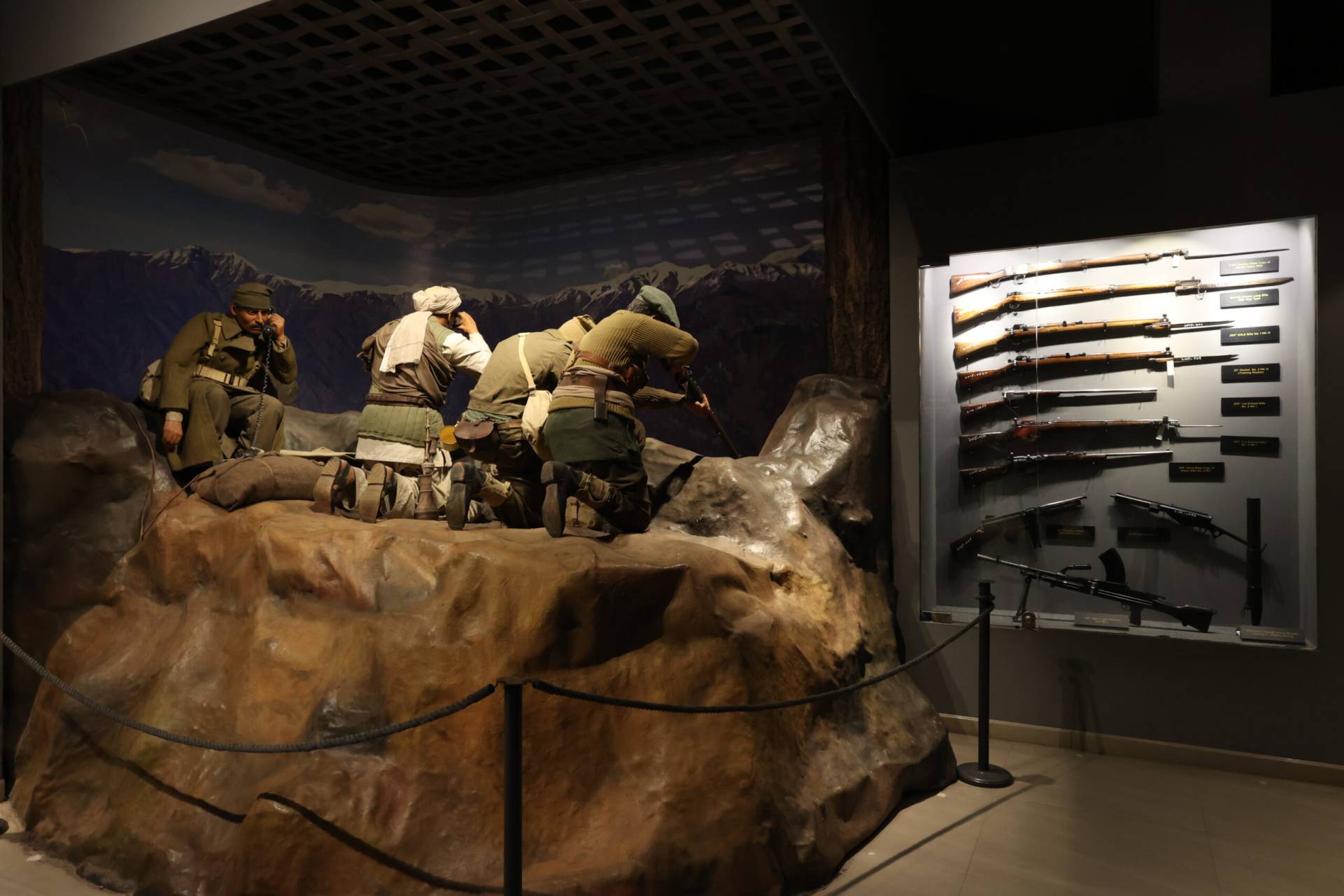
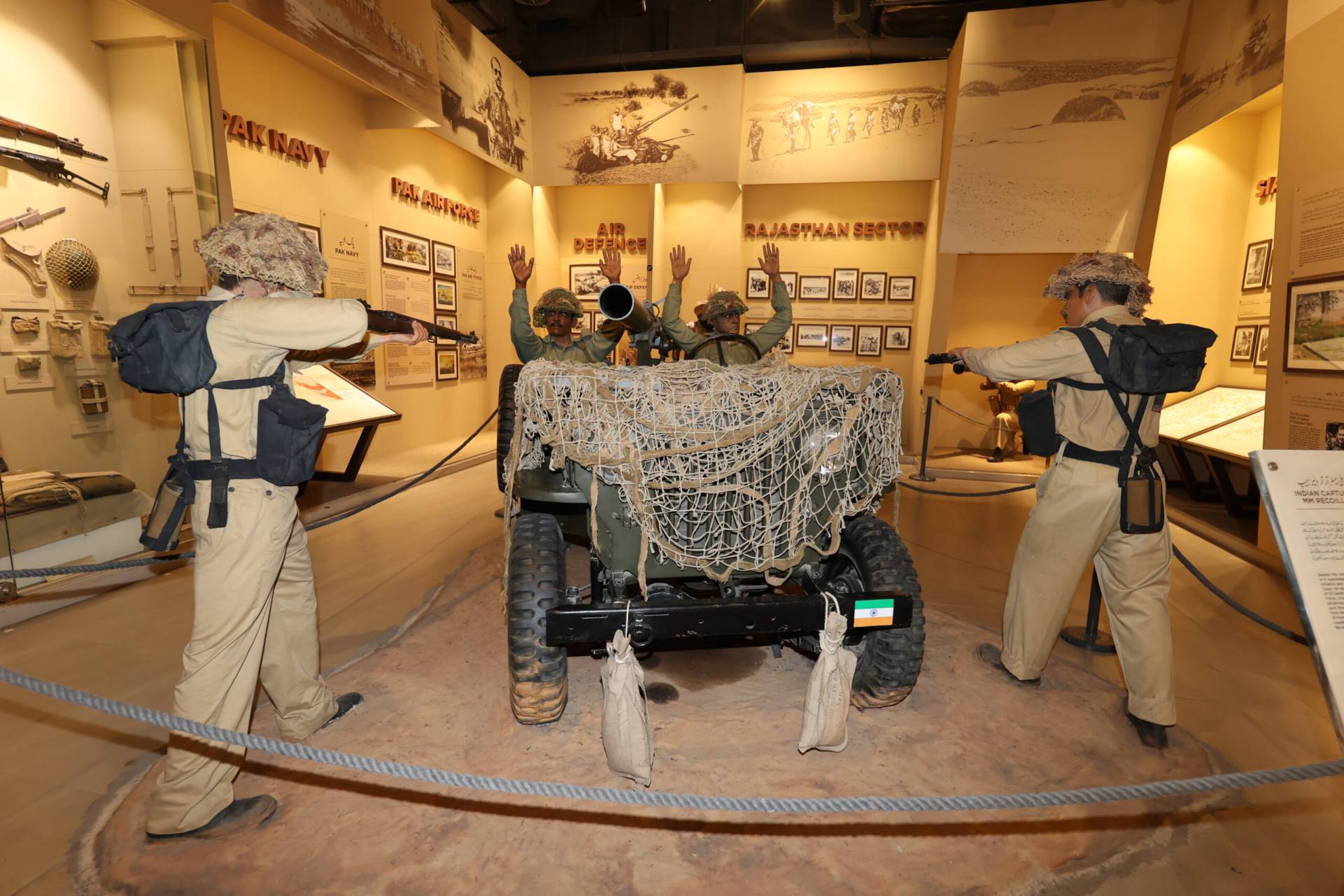
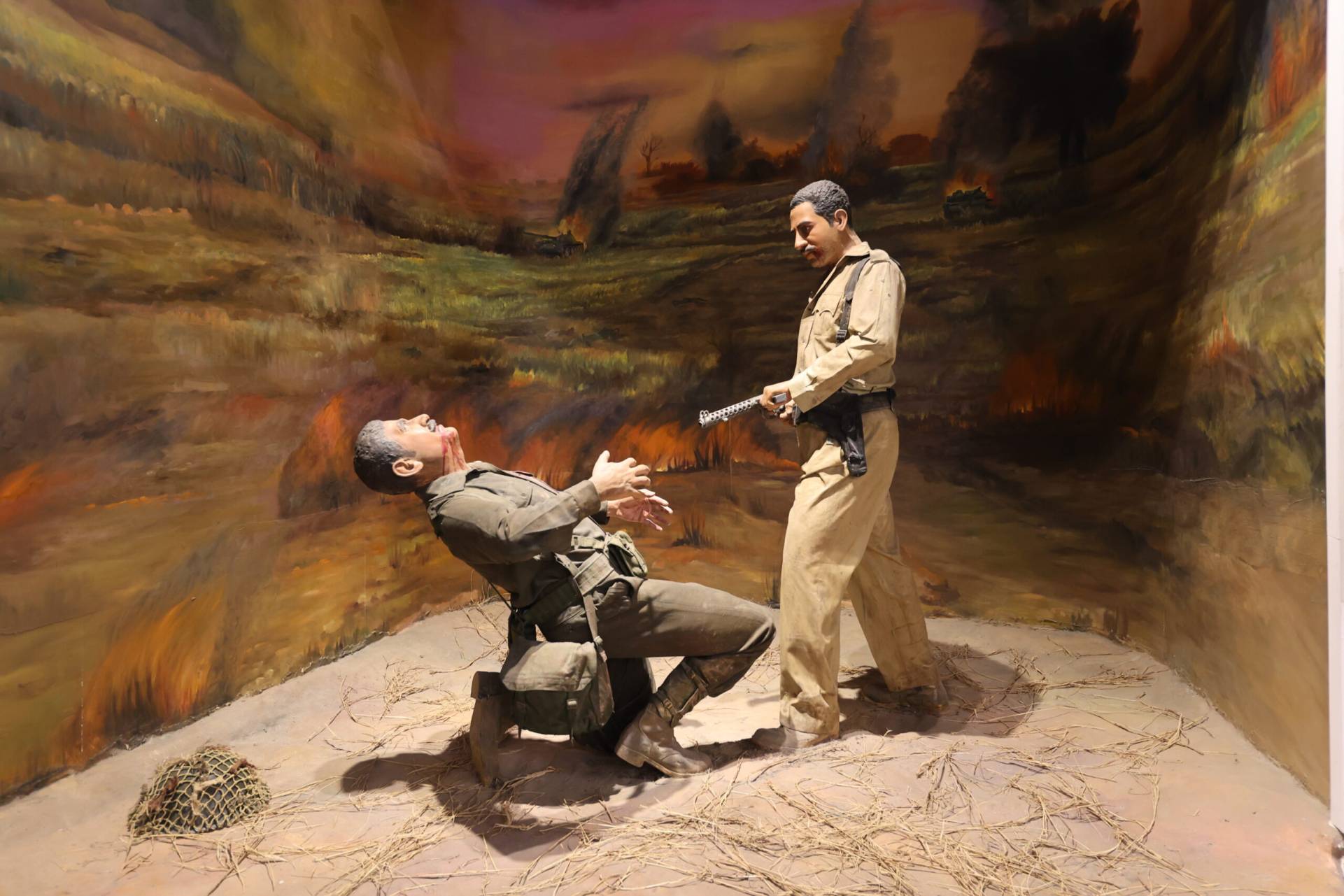

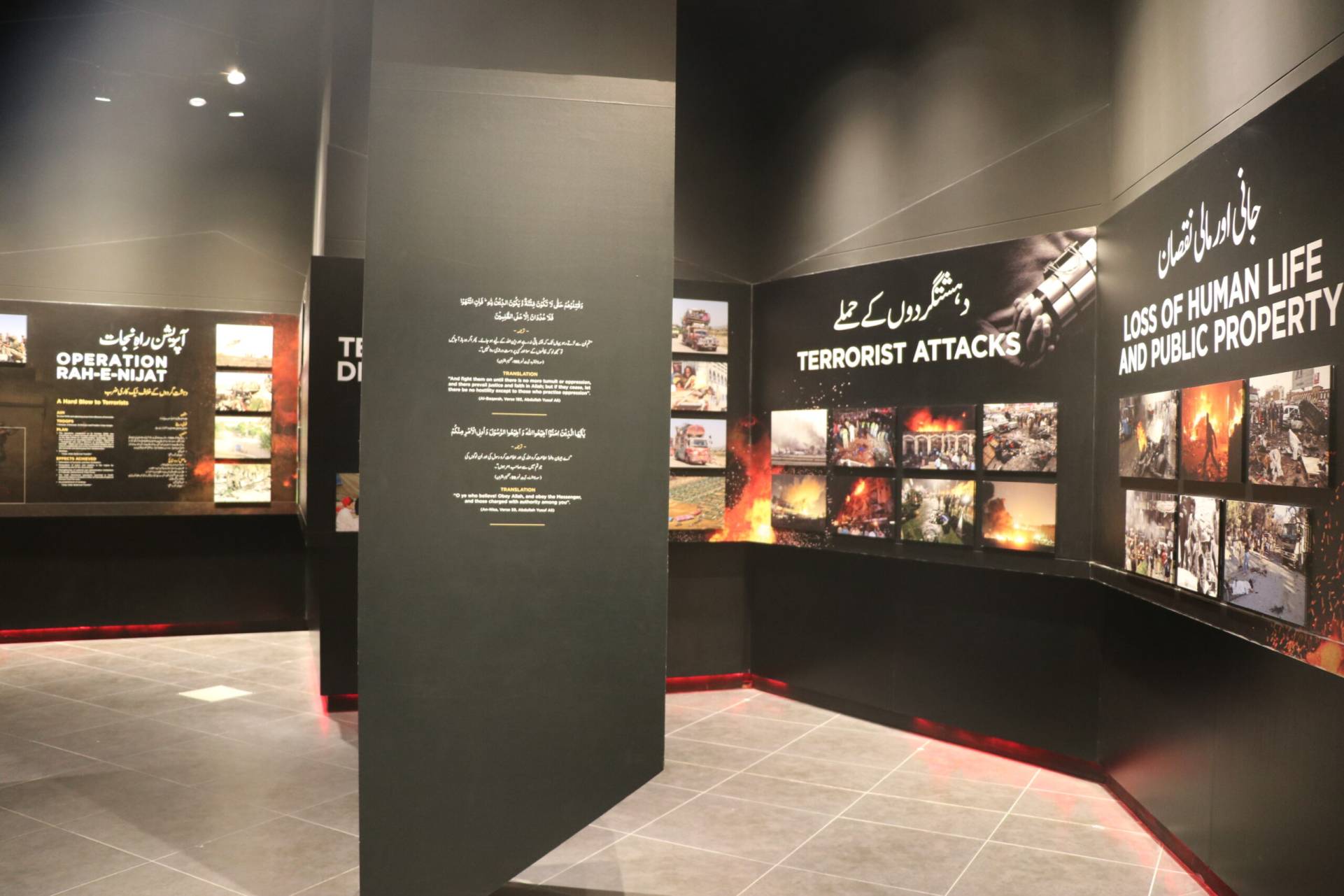
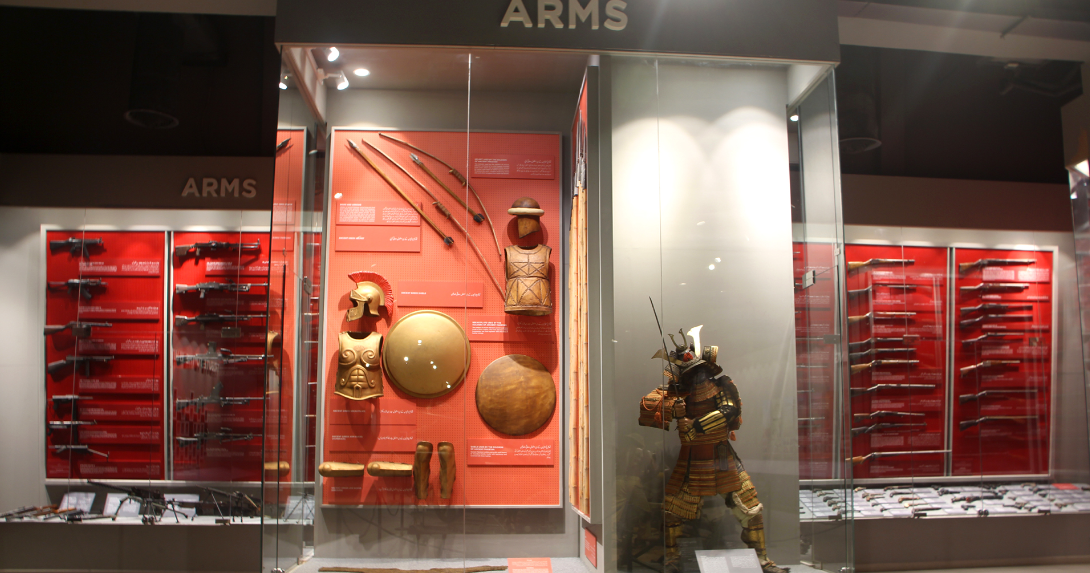
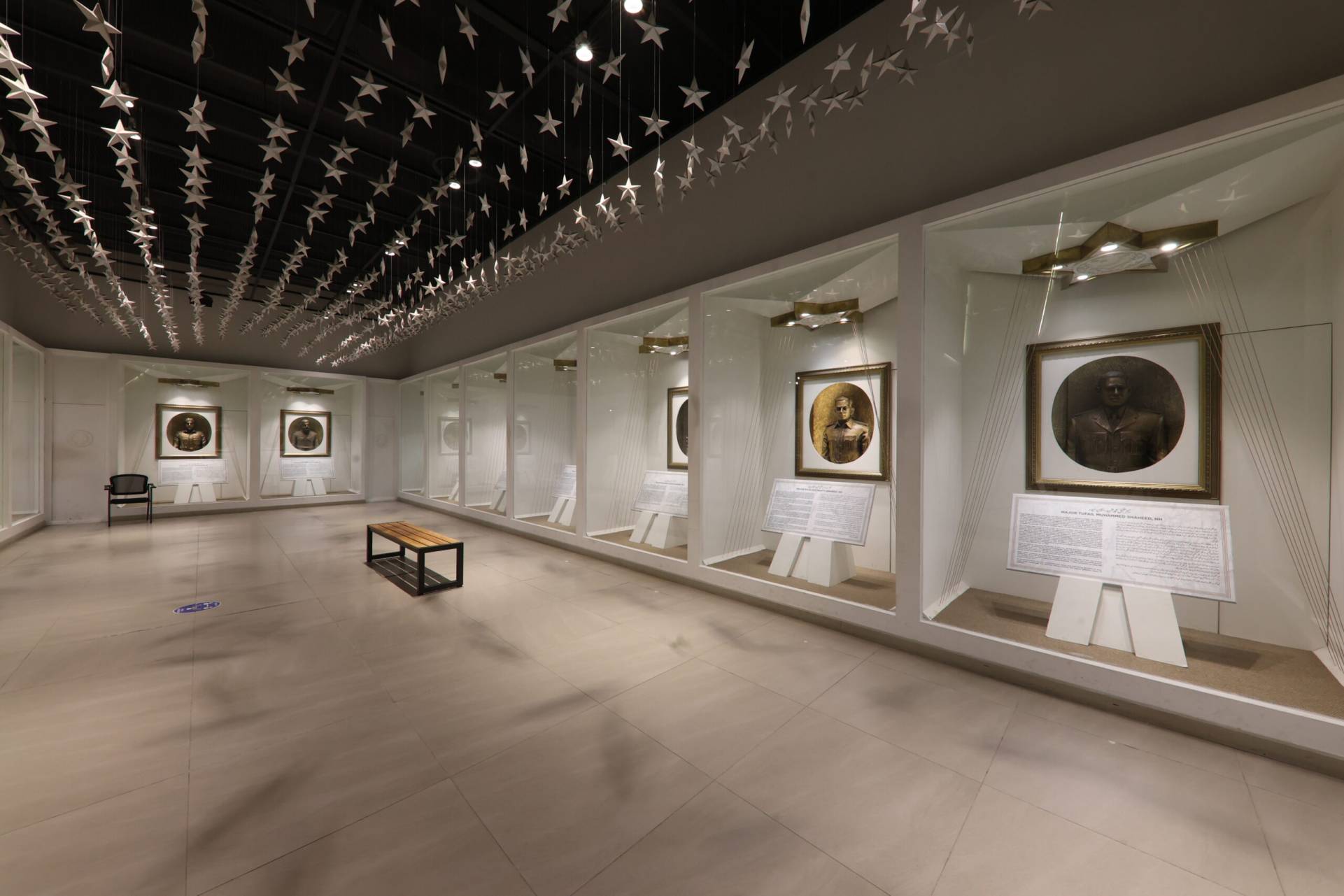
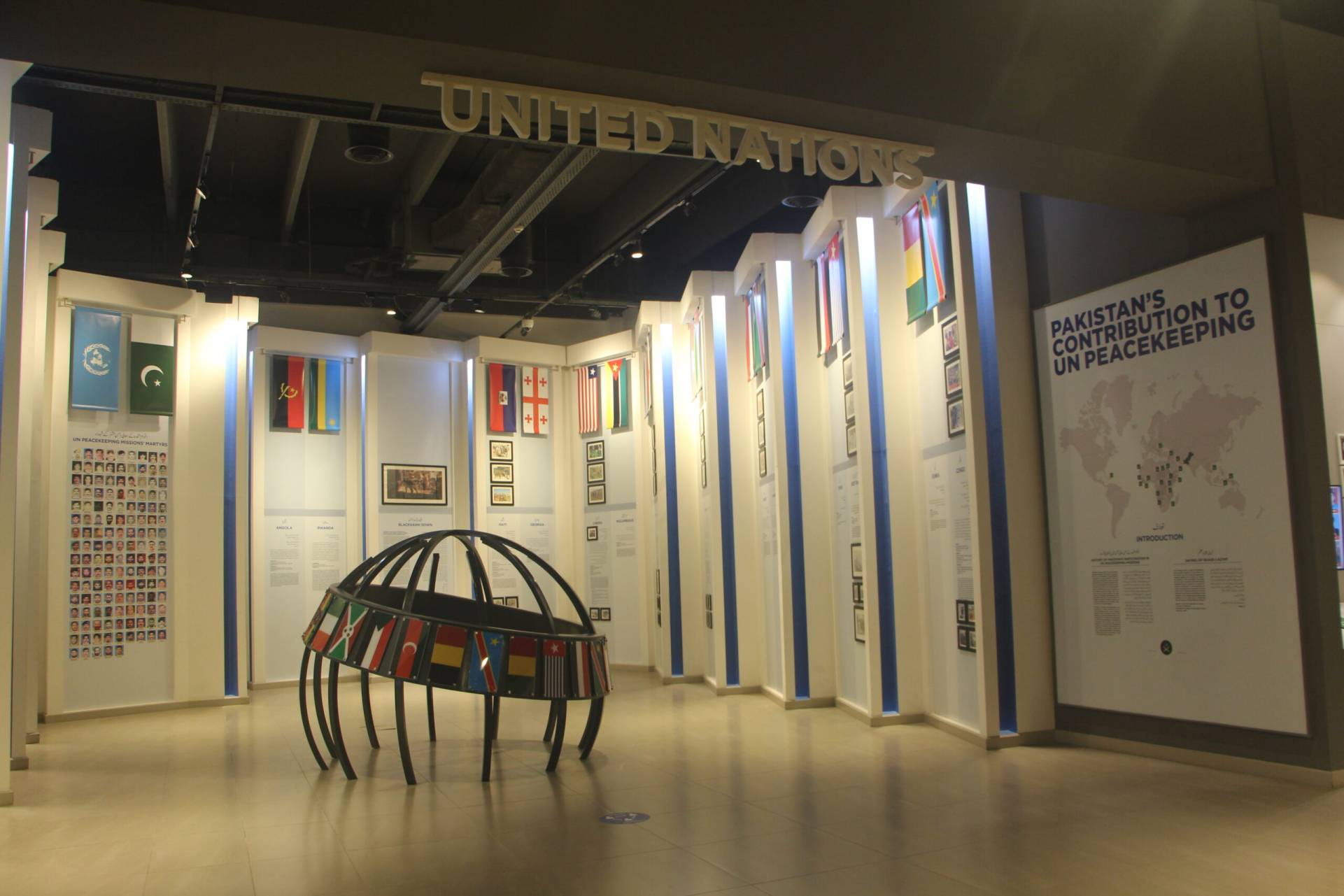
Names of all Pakistan Army martyrs who laid down their lives for this country since 14 August 1947 have been etched on marble stones. Display includes shuhada from soldiers to general officers.
This Gallery traces the major Politico-Military events and heritage of over 9000 years of our history. The gallery highlighted the early start of life in Mehrgarh, Balochistan. The spread of Indus Valley Civilization has aptly been highlighted. The invasions which had taken place in last 3000 years have been displayed for public information
After years of British colonization, the country was reborn. When millions were celebrating the birth of a nation, millions suffered and were displaced. More than a million sacrificed their lives for the new state of Pakistan. The caravans and trains, which were attacked by Hindus and Sikhs terrorists in connivance with Indian Army, are mentioned. The division of assets is highlighted. A train carrying the immigrants to new land of dreams has also been placed in Museum.
After independence and emergence of Pakistan, Pakistan Army played a significant role in the evacuation, transportation and protection of millions of Muslim Refugees from India. At the same time, despite being ill-equipped yet highly disciplined and motivated, these men in uniform defended the country from Indian aggressions as well. This gallery explores the role of Pakistan Army from 14 August 1947 to 5 September 1965, before the second round of Indo-Pakistan War.
The gallery is dedicated to Indo-Pakistan war of 1965 when a much smaller army not only faced Indian Army but dented their spirits and defeated them in every sector. Different sectors as Lahore, Sialkot, Khem Karan and Rajasthan are highlighted. Major Aziz Bhatti’s command post is a centre of attraction for the tourists in this gallery. Role of Air Defense, Pak Air Force and Pak Navy has also been briefly highlighted.
Pakistan was split between East and West Wings. East Pakistan was approximately 1000 kilometers away from West Pakistan. Indians stopped PIA flights over their territory in January 1971; resultantly East Pakistan was approached through Sri Lanka. Role of Indian government and military in exporting terrorism to Pakistan has been highlighted in this gallery. Different sectors in East and West Pakistan have been displayed. Two dioramas of Major Shabbir Sharif Shaheed and Lance Naik Mehfooz Shaheed are centre of attractions for visitors..
The Siachen is derived from the Balti language word Sabaqin which means the “Wild Rose”. It is one of the most inhospitable and glaciated regions of the world and unfortunately is also the highest battlefield in the world due to India’s illegal occupation. The glacier itself spreads over an area of 685 square kilometers, is 76 kilometers long and 2-8 kilometers wide at various places.
Nishan-e-Haider is the highest gallantry award of Pakistan. Only those members of the Armed Forces of Pakistan, of any rank, who had performed acts of the greatest heroism or conspicuous courage in circumstances of extreme danger and have shown bravery of the highest order, or devotion to the country in presence of the enemy on land, at sea or in the air, are eligible for this award. Busts and brief descriptions of valours are placed in a specially dedicated gallery.
The museum showcases an extensive arms gallery encapsulating fascinating artifacts from an expensive time period .
Nishan-e-Haider is the highest gallantry award of Pakistan. Only those members of the Armed Forces of Pakistan, of any rank, who had performed acts of the greatest heroism or conspicuous courage in circumstances of extreme danger and have shown bravery of the highest order, or devotion to the country in presence of the enemy on land, at sea or in the air, are eligible for this award .
Pakistan's journey with UN peacekeeping operations in Congo ( UNUC ). Over the years, Pakistan has been the most significant and consistent contribution of the UN peacekeeping missions around the world .

